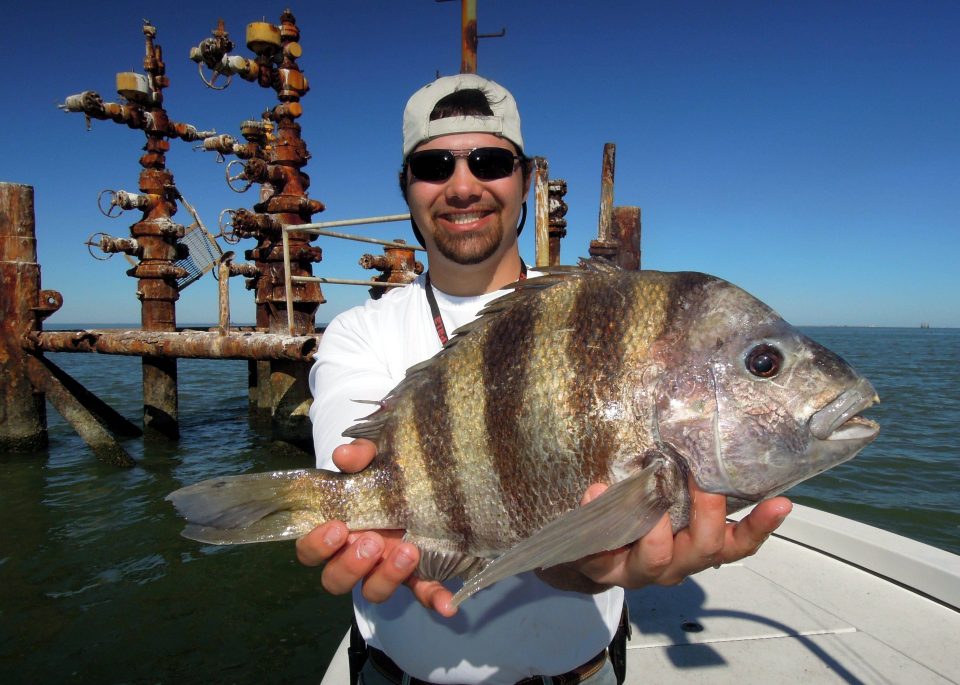Powerful nibblers lurk around underwater structure…
Rapidly falling tides pulled baitfish, shrimp and other creatures from their protective cover into open water. Small crabs drifted with the current. We scooped several diminutive crabs from the water.
I broke the claws off a crab about the size of a quarter and hooked it through the back of the shell to a 1/8-ounce long-shanked jighead. I gently flipped it a few feet upstream and let the tidal flow push it next to a piling under the dock. After feeling just a slight bit of weight, I set the hook on one of the most powerful fish in coastal Mississippi waters.
Sheepshead resemble black drum with alternating black and white bars, but possess human-like teeth hidden behind lips. They use these teeth for crunching barnacles, crab shells and shrimp. Anglers often see sheepshead munching barnacles or fiddlers off dock or bridge pilings in Back Bay. They also hang around jetties, riprap, wrecks or any other solid structures than attract barnacles.
Since they hide under docks or near seawalls, sheepshead offer outstanding opportunities for boatless anglers to land huge fish. The world record, a 21.25-pounder, came off the New Orleans Seawall bordering Lake Pontchartrain. Close behind, the Mississippi state record weighed 19.62 pounds.
Catching sheepshead doesn’t take much finesse. Simply drop a bait next to a barnacle-encrusted piling and wait for the bite. Despite their powerful jaws and impressive dental equipment, sheepshead gingerly nibble rather than gulp prey like a redfish. Notorious bait stealers, sheepshead almost timidly examine morsels before deciding to taste them. Often, anglers don’t even detect subtle strikes. Sometimes, the line simply feels heavy or mushy. A sheepshead can quickly strip bait from a hook, but fortunately, seldom move very far from food.
Rarely hitting lures, sheepshead bite most natural baits, but prefer live shrimp and small crabs. They also gobble dead shrimp, live minnows, cracked clams, squid and sometimes even cut bait. Often, the best fishing occurs around fish cleaning stations on docks. When cleaning their catches, anglers often toss fish heads, entrails, backbones and other scraps into the water. This protein source attracts crabs, shrimp and tiny fish, which keep big sheepshead in the vicinity.
To keep more sheepshead around their docks, some people crack clams or oysters and dump the shells off their docks. Anglers can also use rakes or shovels to scrape barnacles off bridge pilings to chum for sheepshead. The crushed crustaceans put scent into the water that attracts hungry sheepshead.
With so many docks, bridges and other structure along the Mississippi Coast, anglers should find unlimited places to tempt big sheepshead. Hurricane Katrina created many artificial reefs by scattering an incredible amount of debris into Mississippi waters. Much of this debris remains in place, giving big sheepshead abundant places to feed.
Some better places to look for Mississippi sheepshead include Katrina Reef near Deer Island out from Biloxi, the U.S. 90 bridge between Biloxi and Ocean Springs, the Bay St. Louis bridge, Taylor Reef near Pass Christian and Jailhouse Reef near Buccaneer State Park.

